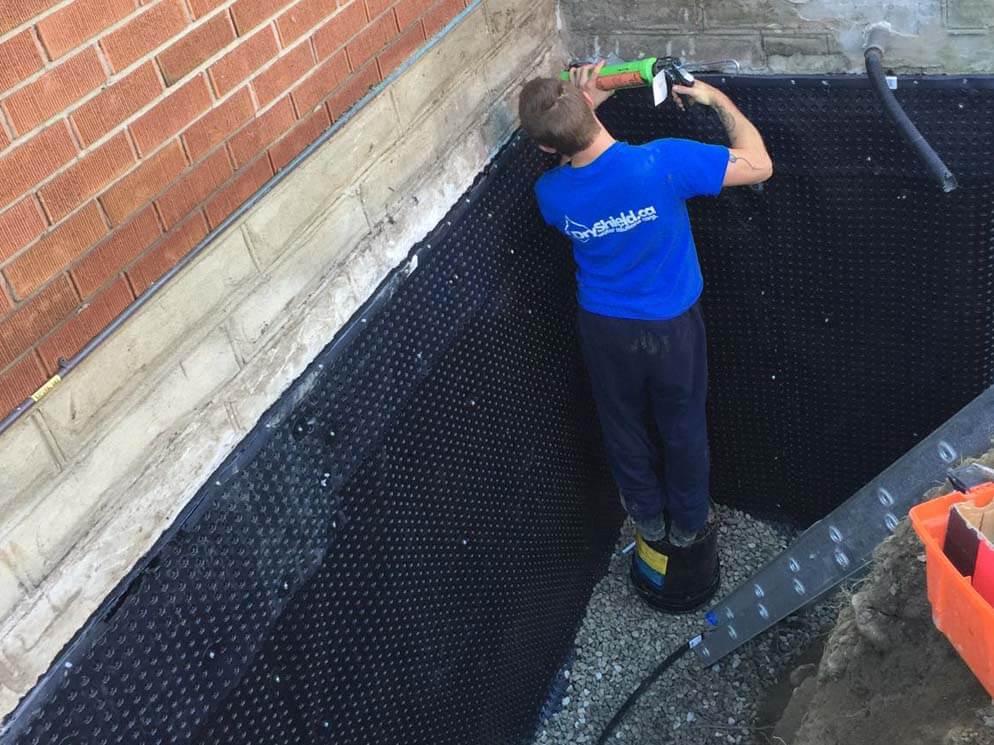Waterproofing Issues for Old Properties
Heritage homes are often cherished for their singular architectural attributes and layered narratives, but they also come with specific difficulties, notably when it comes to moisture control. As these properties age, their materials and frameworks can turn susceptible to moisture damage, leading to expensive repairs and possible health risks such as mold and mildew. Recognizing the significance of moisture protection is crucial not only for preserving the beauty and integrity of these historic treasures but also for protecting the capital that homeowners have made.
In this post, we will investigate the various waterproofing challenges faced by historic homes and delve into methods to mitigate moisture issues. From spotting indicators that your home may need waterproofing to assessing the advantages and disadvantages of DIY approaches versus expert services, we aim to provide insightful information for homeowners. By discussing the specific issues related to moisture control in traditional homes, we intend to encourage you to make proactive decisions in safeguarding your property from the weather.
The Importance of Waterproofing Historic Homes
Waterproofing is vital for historic homes to maintain their historical accuracy and prevent water damage. These dwellings often have distinct features, such as traditional elements and artisan work, which can be affected by moisture infiltration. Moisture can weaken the foundation, lead to mildew, and cause irreversible damage to interior surfaces, basements, and ceilings. Effective waterproofing ensures that these vintage properties stay secure and livable while maintaining their cultural significance.
Neglecting waterproofing in heritage properties can lead to significant expenditures down the line. When water seeps into walls or basements, it can create a domino effect of problems, including wood rot and peeling paint. Over time, these small problems can grow, leading to expensive interventions or even the removal of historic features. By investing in proper waterproofing methods, homeowners can avert serious issues and conserve significant amounts in repairs, ensuring their homes stand the test of time.
In addition to protection from moisture issues, waterproofing can enhance the energy performance of historic homes. By closing https://huynh-lam-2.mdwrite.net/innovative-moisture-control-strategies-for-city-homes and stopping water penetration, homeowners can ensure a consistent indoor environment, reducing reliance on HVAC usage. This not only leads to a more comfortable living situation but also is consistent with green initiatives, making historic homes resilient and eco-friendly.
Typical Damp-proofing Issues for Historic Structures

Aged structures often face unique waterproofing challenges that require cautious consideration and expertise. One major issue is the presence of outdated materials and construction techniques that may not meet current waterproofing standards. Many antique homes were built using absorbent materials such as brick, which can absorb moisture and allow water infiltration. Achieving effective waterproofing in these cases often involves specialized methods tailored to preserve the building's integrity while enhancing its resistance to water damage.
Another challenge is related to shifting and movement that aged buildings experience over time. Foundation issues, such as breaks and gaps, can develop, compromising the building's waterproofing solutions. These vulnerabilities can lead to water seeping into crawl spaces, resulting in mold growth and structural damage. Addressing these issues requires a blend of proper foundation repair techniques and effective waterproofing measures to create a solid barrier against moisture.
Furthermore, the visual preservation of antique homes complicates the waterproofing process. Homeowners often wish to maintain the true appearance of their properties, which can limit the types of waterproofing solutions that can be applied. Balancing the need for effective waterproofing with the desire to preserve cultural features requires experienced professionals who understand both the practical aspects of waterproofing and the historical significance of the building. This challenge makes it vital for homeowners to carefully choose waterproofing methods that align with their preservation goals.
Valuable Methods for Safeguarding Heritage Homes
Maintaining historic homes necessitates a thoughtful approach to waterproofing that maintains their architectural authenticity. Specific materials and methods should be used to guarantee that the original features are not altered during the waterproofing methodology. For instance, ventilated membranes can be used to enable moisture trapped within the walls to escape, avoiding damage while keeping the home waterproofed. This method prevents the build-up of moisture that can lead to mold and construction issues without trapping vapor inside the walls.
In addition to breathable membranes, time-honored masonry techniques can play a critical role in waterproofing historic structures. Lime-based mortars and plasters are suitable for older homes as they provide resilience and breathability that modern materials often do not provide. These materials can help to wick moisture away from the structure while maintaining the aesthetic qualities that define historic architecture. This approach not only protects the building from water damage but also safeguards its historical character.
Another effective strategy for preventing water damage in historic homes is to focus on proper drainage and landscaping. Ensuring that gutters and downspouts are functioning effectively can direct water away from the foundation, while landscaping features like swales and rain gardens can more manage water runoff. By combining these methods with appropriate waterproofing techniques, homeowners can significantly enhance the resilience of historic properties against water damage, securing their preservation for future generations.